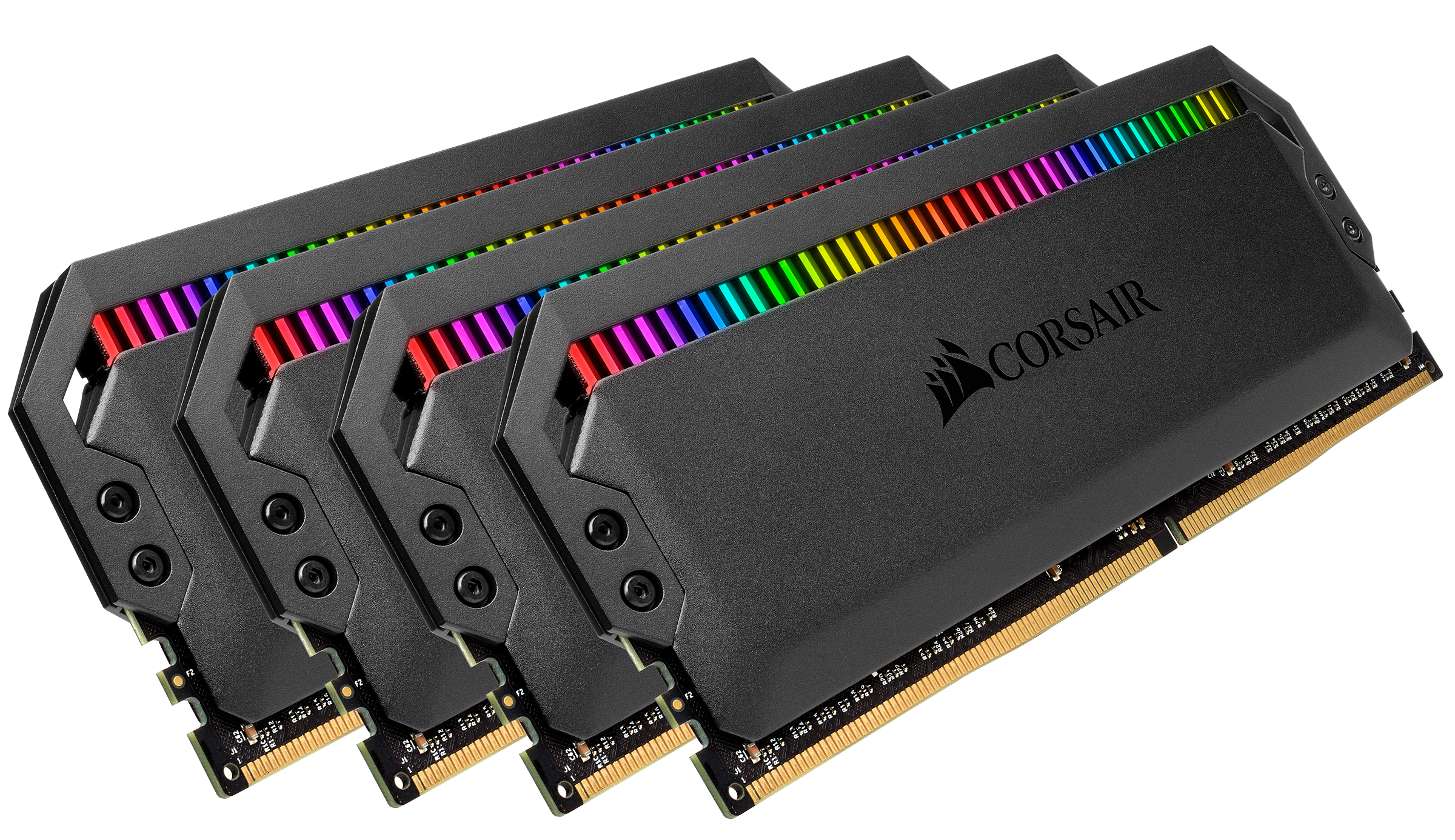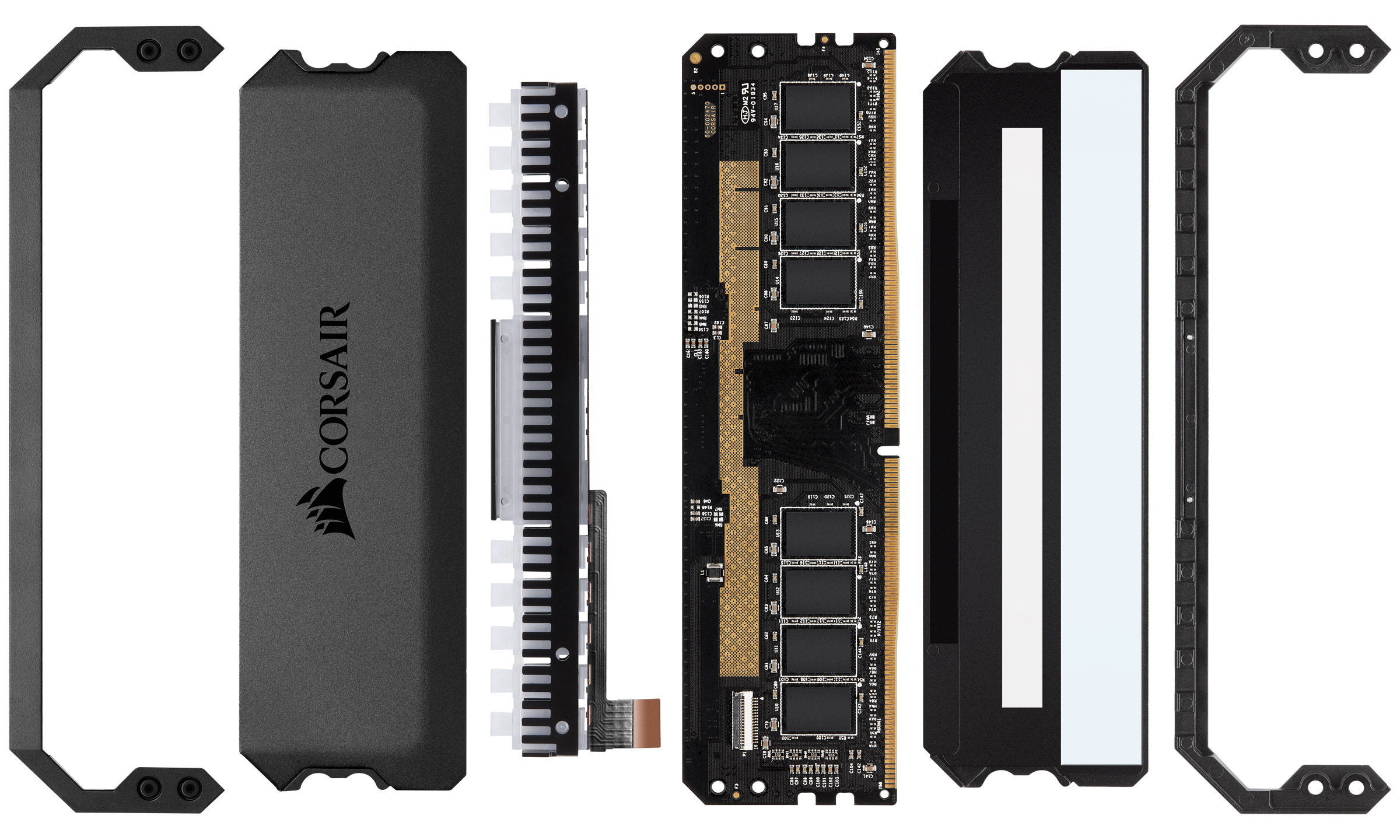Corsair upgrades its Dominator series with the Dominator Platinum RGB DDR4 3600 (and other clock rates) technically and visually again, so that a test seemed quite convenient to me to question it. What all this then brings in practice must be proven by the test scenario, which is deliberately designed in a practical way, because all synthetic tests with similarly fast competitor products were at an almost identical level within the scope of the measurement tolerances. By the way, because everyone ends up using the same memory modules from Samsung.
If you are very attentive, you will not notice any differences between today's test and what I was able to measure with a competitor product without eye-catching light beams some time ago. Not even at the first decimal place! This, too, is easy to explain, because what counts is on the court and practical workloads are more honest and practical than any synthetic length comparison. If the RAM uses the same clock and the same timings at the end, the whole suite would probably be of no use, one would be able to measure significant differences here. I find this only in the second post after the comma in the normalized creation of the performance index. But that would be a lot silly for an absolute assessment.
I will therefore use this fast memory to compare the individual clock rates for Intel and AMD processors within the technically feasible and optimized, common settings for professional applications (compute) and gaming. So everything as usual? Not quite, because we add up the fun factor. Purely subjective, of course.
Thus, as a distinguishing or Unique selling point is actually only the optics. Here, however, Corsair lets it crash properly, because the 12 built-in and freely addressable RGB LEDs glow as brightly as if there was no tomorrow. So if you need the ultimate fun for the PC and also a clever night light on the gaming PC – here you are guaranteed to find it. Those who are on a darkroom feeling, on the other hand, should strike somewhere else or brush everything black. It won't be anything else.
The DRAM memory modules use only Samsung bone-die modules, which run as DDR4 3600 with CL16-18-18-36 for the 1.4 V operating voltage mentioned above. The timings and latency are available in the stored profile, can of course also be freely set by gusto (if you have the appropriate motherboard). The manufacturer also states that it has checked and selected this memory.
As with the motherboards, the number of layers and the board material used play a major role. If you don't need to think about 3000 MHz for motherboards under 6 layers, you should judge a total of 10 layers, an optimized layout and gold-coated contacts. The latter is certainly primarily concerned with possible later corrosion, because the contacts should conduct sufficiently well even without finishing.
The following explode graphic shows the internal structure of such a module quite clearly:
Ok, enough marketing, we get to the software, because without it it is not possible. Corsair relies on the SM bus for communication, eliminating the need for external connections on the module. You can control everything that heart, brain and soul desire – well, at least almost. After all, it also allows you to control the effects of all other Corsair products such as keyboard, mouse, AiO, housing and other things. However, there is no synchronization with the motherboard. The gallery shows the most important masks of the iCue software from Corsair very nicely:
In addition to all possible information about the storage and its data, such as temperature, clock, etc. can of course be paddled in real-time RGB. That works really nicely in practice and whoever stands on it has the final kick in spe here. This ranges from various light and luminous effects to displaying system states such as the CPU temperature through various color games, in which you can also engage creatively. At the very end of the article I link the YouTube video, which also shows the RGB fairy lights in action, so zaps in, then it dedicates…
| Technical data | |
|---|---|
| Capacity |
32G (8G*4) |
| Form factor: |
Long DIMM |
| Assembly: |
Single-sided |
| PCB color: | black |
| PCB Layers: | 10 |
| Clock: |
3600 MHz (up to) |
| Timings: | CL 16-18-18-36 |
| Voltage | 1.4V |
| Controller | SM bus |
| Led | 12 programmable Corsair Cappelix RGB LED |
| Cooler | Heat Sink, DHX Cooling |
| Profiles: | Intel XMP 2.0 |
| Product code: | CMT32GX4M4K3600C16 |
| Street price: |
Eel 569.99 RRP, approx. 449 Euro street price |
In this case, only the hardware configuration with CPU, RAM, motherboard, as well as the new cooling is different, so that the summary in table form quickly gives a brief overview of the system used here and today:
| Test systems and measuring rooms | |
|---|---|
| Hardware: |
AMD Socket AM4 and Ryzen 7 2700X MSI X470 Gaming M7 AC, Ryzen 7 200X Intel Socket 1151 (Z370) and Core i7-8700K: DDR4 4000 CL19-25-25-45 Nvidia GeForce RTX 2080 FE (Gaming) |
| Cooling: |
Alphacool Ice Age 2000 Chiller Alphacool Ice Block XPX Thermal Grizzly Kryonaut (for cooler change) |
| Monitor: | Eizo EV3237-BK |
| Housing: |
Lian Li PC-T70 with expansion kit and modifications Closed Case |







































Kommentieren